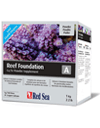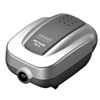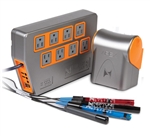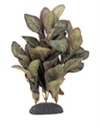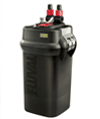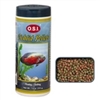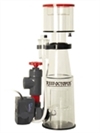Top 10 Tips for Professional Aquarium Installation

Planning Ahead & Doing It Right the First Time May Save You Thousands of Dollars and Hundreds of Hours of Labor
- Use Drip Loops and GFCI Protected Outlets
- Drip loops and GFCI outlets are essential for keeping your aquarium safe. Drip loops ensure that when a cord gets wet the water won’t run into an electrical outlet and cause a fire. GFCI protection ensures that power is cut off if there is ever an unusual change in a circuit’s voltage, such as when you accidentally drop your light into a tank.
- Drip loops are made by making sure there is portion of cord that dips down below the level of the outlet a cord is plugged into. An easy way to ensure drip loops is to mount your power strip to the inside of the top back wall of your aquarium stand. This way all cords from your aquarium equipment will travel downward before reaching the power strip.
- GFCI protection can be achieved by using a specifically designed GFCI outlet GFCI Plug Adapter.
- Keep Your Tank Level and On An Even Surface
- Ensuring your tank is level can go a long way in protecting your animals and home. Tanks placed on uneven surfaces can crack and leak.
- Place your tank on a flat surface
- Use a level to check the stand and tank before and after filling the tank with water.
- Use wooden shims or a steel stand with leveling feet to make adjustments if necessary.
- Choose the Right Location For Your Tank
- Put your tank in the right place for maximum enjoyment and ease of care. Moving a tank placed in a bad spot is a real hassle.
- Avoid large amounts of sunlight to cut back on algae growth and heat.
- If possible, do not place your tank next to outside walls to keep the aquarium better insulated.
- Make sure there is an outlet or two nearby.
- Make sure there is a drain relatively close for disposing of dirty water.
- Make sure the floor can support the weight of the tank. Consult an engineer if necessary.
- Choose a location that you will be in frequently so you can enjoy the tank but also observe the inhabitants to ensure their health.
- When You Decide On Aquarium Size, Be Sure You’re Willing To Clean Something Of That Size
- Many aquariums start out looking beautiful but ultimately turn ugly because they are too difficult to clean.
- Choose a tank that is not too deep so you can easily reach the bottom. 24-30 inches is usually the maximum a person can reach.
- Make sure your stand is tall enough that you can easily access the sump and remove equipment for cleaning.
- If the total height of the tank and stand is really high, you might need a ladder to access your tank. Nothing wrong with ladders—just something to consider.
- Make sure you leave enough room behind the stand to reach behind it if necessary.
- Make sure that your canopy will pop open or be tall enough that you can easily get to your lights and get into the tank for maintenance.
- Consider a rimless tank with suspended lights for the easiest access to the aquarium.
- Choose a location where you can access the aquarium from 3 or even 4 sides.
- Aquarium Aesthetics
- Some simple steps can make your aquarium much more appealing to the eye. Aesthetic concerns should be balanced with the practicality of cleaning the tank.
- Just like a picture frame, your aquarium will look best if the center of the glass is at eye level. A good balance of aesthetics and practicality is a stand of around 36 inches in height and a tank no more than 30 inches tall.
- Choosing a taller aquarium will make your tank feel large without occupying a bigger footprint. However, tanks taller than 30 inches can get impractical.
- An aquarium more than 24 inches from front to back will give your tank the feel of depth rather than a flat look.
- Choose a proper-sized tank for the room. Too big or too small can ruin the aesthetic.
- Have a cabinet made that matches your home décor.
- Consider an in-wall or peninsula-style install. They can be stunning.
- Use a canopy to stop your aquarium lights from flooding the room with light and blinding the occupants.
- Cord Management
- Aquarium stands can often turn into an octopus of wires that is not only ugly but unsafe.
- Mount power supplies ballasts and controller boxes to hard surfaces like the back of your aquarium stand or the wall.
- Use zip ties to keep wires bundled together.
- Use high-quality industrial power strips.
- Use cord concealers made for home entertainment systems to keep cords hidden and flush against the wall.
- Use Quality Plumbing
- Using quality plumbing parts will avoid the risk of floods and make servicing equipment easier.
- If possible use the extra thick schedule 80 bulkhead fittings.
- Use quality true union ball valves so you can easily disassemble plumbing in the future should you move or upgrade your tank. Do not use the outdoor rated valves from the hardware store.
- Make sure any flexible line is attached with hose clamps. Use plastic for underwater connections and metal for connections outside of the water.
- Try to use black hose rather than clear hose to avoid algae growth in the hose.
- Plan For Upgrades and Changes
- When planning your installation make sure that you can add equipment in the future.
- Leave extra space in your sump and stand.
- Leave open electrical outlets on your power strip.
- Use plumbing manifolds with extra outlets.
- Redundancy
- We often have customers who are desperate to replace a critical piece of aquarium equipment that has failed. They pay for expensive expedited shipping for the replacement equipment. Please keep in mind nothing lasts forever. You should expect lighting and UV ballasts to only last five years, powerheads to only last two to five years, pumps to only last five to ten years, and heaters to only last two to three years. A high-quality, well-maintained chiller might last ten years. However, these are just averages—not guarantees. Every life-support system on your aquarium should have a backup.
- Use more than one pump to keep your water oxygenated in case one fails. If you’re on vacation and the only pump in your aquarium fails, you might lose everything in the tank.
- Use a battery backup in case there is a power outage.
- Use multiple power strips in case one stops working.
- Use two heaters in case one fails. If you need 300 watts of heating to keep your tank at the proper temperature, you’ll be better off with two 150-watt heaters than a 300-watt heater.
- If you have corals, you might want to have a backup light in case your light fails. It doesn’t necessarily need to be as powerful as your main light, but it should be powerful enough to keep your corals alive until you get a new light.
- If you have a considerable investment in livestock, you can lose everything if your tank overheats. If you use a chiller, you might want to have a backup.
- If you use an aquarium controller keep some equipment disconnected from your controller in case it fails.
- Lights, pumps, controllers, chillers, and heaters can often be fixed either with a replacement component or by sending the product back to the manufacturer either under the warranty or outside the warranty. However, you may not be able to fix your equipment in a day or two, and without backups, your livestock might perish.
- Quality Over Quantity
- Rather than having an extravagant aquarium that cuts corners, you will be happier with a modest-sized, well-designed aquarium. To this end:
- Consider a saltwater fish-only aquarium rather than a reef aquarium if having the reef would mean you would need to cut corners.
- Consider a freshwater tank rather than a saltwater. Freshwater aquariums are less costly.
- Consider a smaller tank with high-quality equipment rather than a large tank with budget equipment.







